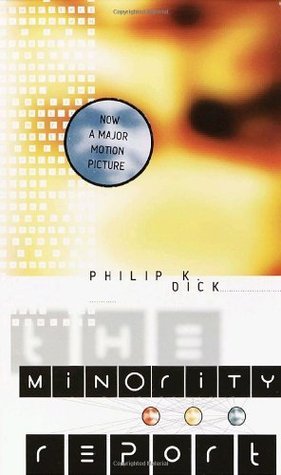
Technology wise, this story and "Paycheck" (also by PKD) are very similar. If you read this one, you might want to read Paycheck for contrast.
Writing is clean and accessible. In typical PKD fashion, the characters don't have a great deal of backstory, and are not that emotional in general. The strength of this book is not so much even the plot, but the idea.
The idea is simple... Oh, you should stop reading right now if you don't like spoilers at all. Seriously, go read the story, you can do so in about a hour, I will wait.
Back? Ok, as I was saying, the idea seems pretty simple. TMR relies on the fact that the precogs (as an aggregate) can see the current future. Precrimes stated goal is to look at this tracked future, and derail it a bit by preventing the crime itself. They then take the person that would have committed the crime and put them in a internment camp of sorts.
Well, ok. There are some fairly large paradoxes there, but I am not going to argue them as you can get them all by reading a "Back to the future" forum. :]
The big idea from this book is that there was no Majority Report this time, there were only 3 separate minority reports. Each minority report was a different snapshot of the current world. In general, the snapshots of the current world do not materially effect the world, as the snapshot information is only known to Precrime, and they only use the information to stop a crime.
If Precrime were to publish the list of people who would be murdered the next day in the paper, it would effect those people; they would make changes to their days and probably stay alive. The crime would never have been committed. However, Pre-crime does not taint the current state of the world by revealing information, they only change things right before a crime is to be committed. This allows them to actually assume that the crime was going to be committed, arrest the guilty, save the victims.
In this case though, the world was being tainted by the reports. Anderton was implicated in the reports, which he read at various points in the story. Each time he reads a report, he read about a new snapshot of the world. Each time he reads of a snapshot, it causes him to react (derail) from the actual report. Each subsequent report was actually a recursion of the previous state of the world + the state of the world given the reports that Anderton had read. One can see this process going on forever, a new report always creates new information for Anderton to react to, causing the need for another report to actually be generated in order to know what happens. The rub is though, by reading it, you are effecting what should have happened, and the report is now invalid again. Presumably, the best you can do is create a report, never read it, and then let Anderson commit a crime (or not?). You know who did the crime, it will say so on the report, but you have no way of really stopping him. This would be a logical though morally questionable tactic.
Anyway, it is the idea of recursion and side effects (tainting) that make this story fun. If you stop and think about it, there are some serious paradoxes going on here, as well as some questions about the nature of crime and punishment that are worth considering. Still, who cares, it is a story that gives you something worthwhile to think about, and does so in about a hours worth of reading. You don't need to know the future to know that is time well spent.
